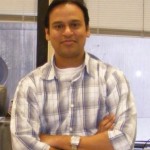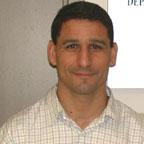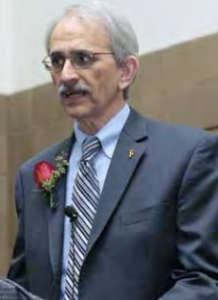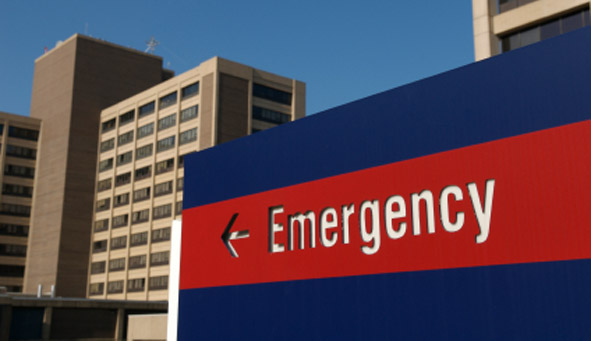#CSM2013 has arrived! Pre-conference courses are in full swing and the regular section programming begins tomorrow morning. Acute care practice received press online and discussion here on PT Think Tank. Now, I am going to review an inspirational lecture from 2 years ago at #CSM2011 that I truly enjoyed.
Jim Dunleavy PT, MS gave the inaugural Acute Care Section Lecture at #CSM2011 entitled “Acute Care: Our Foundation and Our Future.” Jim has been instrumental in the Acute Care section as well as served as president of the New York Physical Therapy Association.
Here are some quick facts you may not know about the Acute Care Section:
- Formed in 1992
- First section with platform presentations
- First to share special interest groups across sections
- Goal of establishing an acute care physical therapy speciality certification
- APTA’s 2011 Most Outstanding Section award
- Twitter @AcuteCarePT (ond of the most active sections)
- Fantastic website with excellent resources
Jim discussed the history of our profession in the United States. The physical therapy profession grew out of serving societal need, providing necessary service not otherwise available. Jim urged us to not loose site of what society and patients need, not merely what we desire to accomplish professionally. A focus on need, service, and commitment.
Now, I must say Jim has VISION. Throughout his lecture he kept emphasizing the “courage and will to change.” He even poised the question how could direct access physical therapy be practiced within the hospital? Interational therapists, notably some in Australia, practice in a direct access environment even within intensive care units.
Jim stressed pursuing measurable financial, personal, and patient outcome effects of acute care provided by physical therapists. He presented the necessity for openness to new business relationships with the facilities at which physical therapists are currently employed. Changes in healthcare, payment and hospital care delivery require physical therapist practice to evolve. Can an acute care physical therapist structure their practice like a hospital physician?
As I discussed in so, you think you can walk? Jim maintains that a function only approach may cost a facility more money. It is imperative physical therapists research and present their impact on costs to the patient, hospital, and health care system in addition to patient outcomes (pain, function, morbidity). Across settings, a function only approach results in far too narrow and limiting scope of analysis for our practice. A great example of the profound effect we can have on medical outcomes and complications, regardless of function, was illustrated in a recent PTJ manuscript investigating an early mobility program in a trauma and burn intensive care unit.
No adverse events were reported related to the EMP [early mobility program]. After adjusting for age and injury severity, there was a decrease in airway, pulmonary, and vascular complications (including pneumonia and DVT) post-EMP. Ventilator days, TBICU and hospital lengths of stay were not significantly decreased.
So, regardless of the functional implications of early mobility and a lack of effect on ventilator days and hospital length of stay, there a strong argument for the presence of a physical therapist and early mobility in a TBICU exists. If this investigation focused soley on function, a vital, important outcome of movement would have been overlooked.
But, the Acute Care section needs help and recognition from the other sections. Further, it needs young, motivated individuals to sustain and execute it’s vision and goals. Despite impressive and innovative acute care practice expansion over the years including more complex, acute patient populations and environments ranging from emergency departments to intensive care units, the Acute Care section has struggled for meaningful recognition and collaboration from professional colleagues…
So, what’s next?
Research illustrates the importance, effectiveness, and outcomes when a physical therapist is involved in patient care. Future investigations should focus on specifics of interventions including frequency, duration, intensity, and content which is most efficacious and effective for specific populations. But, global inquiry on the impact of physical therapists on patient, hospital, and healthcare outcomes should not be abandoned. Some of the more profound research is not just what physical therapists can do to improve function and quality of life, but on reducing the risk of adverse medical outcomes and morbidity. ALL students should have some type of acute care rotation or experience prior to graduation. If we truly want to assume our role as direct access providers of choice all students must obtain didactic knowledge and clinical exposure to acute medical conditions.
Dan Malone, PT, PhD, CCS and recently elected president of the cardiopulmonary section states in his editorial The New Demands of Acute Care: Are We Ready?
The articles cited here should inspire us—acute care practitioners, therapy managers, and educators—to examine and evaluate how to provide services as well as how to facilitate the integration of the specialized knowledge, skills, and behaviors that will bring success in acute care. We face many challenges ahead—an aging population; changes in work processes and care delivery; recruitment and retention of high-quality staff; and the imperative to define the value of physical therapy to our many stakeholders, including patients, referral sources, and third-party payers. Are we ready?
Physical therapists in acute care (and beyond) need to step up to the challenge. We need to focus on changing the process and concept of our practice. We need to improve our understanding of pain and musculoskeletal conditions. We need to treat patients within the hospital who have pain complaints. We need to assist in pain management, pain education, and pain understanding for out patients, our colleagues, and other professionals. We need to continue to educate our outpatient colleagues on the physical therapists role in managing medical conditions. We also need to learn from and collaborate with them.
This years Acute Care Lecture is on Wednesday from 6:30PM to 7:30PM in the Hilton Bayfront Indigo GH rooms. Sharon Gorman PT, DPTSc, GCS will discus Leveraging Technology to Advance Acute Care Practice. Even if you do not practice in acute care, please stop by. Interested in attending some Acute Care Section Programming? Here is the #CSM2013 schedule.






